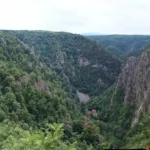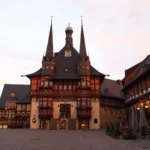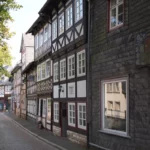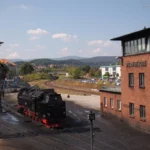Last Updated on 13/06/2025
Quedlinburg has escaped the destruction of great wars and devastating fires. Its 1200 half-timbered houses from different eras await your cameras and your admiration.
The city is considered by many to be the most romantic of the Harz cities. We liked Wernigerode better, but only because that that year Quedlinburg was the most renovated of the Harz cities. Now, of course, you can see it in all its glory.
Thale, children program
Brocken, Wurmberg
Wernigerode
Public transport in Harz region. Harz card and Hatix
Harz map. Center and East – from Wernigerode to Tilleda
Harz. West. Map of attractions
Goslar What to see
Einbeck – half-timbered jewel
History
Archaeological excavations have discovered traces of an ancient settlement (7 thousand years ago) east of Quedlinburg. Later settlements arose on the Castle Hill.
In the 5th century these lands belonged to the Thuringian. Later, the Thuringians were driven out by the Saxons and Franks.
It is believed that in the name of the city the first part corresponds to the name of the founder of the city (a Thuringian named Quitilo, which means “one who speaks well”).
At the beginning of the 10th century the Carolingian dynasty finally lost its power, and in 919 the Saxon duke Henry 1 of the Fowler was elected king. And it happened, as the legend says, in Quedlinburg. Henry 1 is considered the first German king – during his reign the name “Kingdom of Germany” appeared.
The Imperial Palatinate at the Castle Hill (Schlossberg) was the favorite residence of Henry I, and he and his wife were buried in the church on the mountain. In some periods of the 10-12 centuries the city even became the capital of the Holy Roman Empire.
Heinrich’s wife Matilda received permission from him to build a convent on the Castle Hill, which was intended to educate girls from noble families. The monastery received extensive possessions and became very powerful. From the 13th century the power of the abbess gradually diminished, while the city received greater rights and richer.
Quedlinburg from 994 had market rights and the right to print coins, and in the 12th century – special trade rights that put it on a par with Magdeburg, Cologne and Mainz.
In 1422 the city became a member of the Hansa, but in 1477 the abbess, with the help of her brothers (the Saxon elector and the Saxon duke), was able to subdue it to Saxony and forced it to leave the Hansa.
The rights to Quedlinburg were sold to Prussia in the 18th century, and the abbey was secularized in 1802.
Quedlinburg old town
In the 10th-12th centuries Quedlinburg was an important imperial city. For the period from 922 to 1207 German kings and emperors paid 69 visits to him, the most important imperial meetings were held here.
Quedlinburg map
The map can be enlarge.

The oldest houses are located on the streets (in the order of the circular route from the station):
- Pölle (7, 46),
- Stieg (18, 21, 22, 28, 29, 30),
- Hölle (3,4, 10),
- Schuhhof (1),
- Word (3, 4, 5, 6, 24, 25),
- Münzenberg,
- Altetopfstrasse,
- Finkenherd (1, 2, 8),
- Schlossberg (4, 10, 12),
- Lange Gasse (26a, 27, 30),
- Blasiistrasse,
- Marktstrasse (2, 4, 6),
- Marktkirchhof (2, 5, 6),
- Schmale Strasse (13, 47, 49),
- Breite Strasse (33, 34, 49. 51-53),
- Klink (4, 8, 9).
The oldest part of the city is the Castle Hill (Schlossberg).
Quedlinburg Castle Hill
Monastic Church of St. Servatius was built in 1021 on the site of the first small chapel of the 9th century, as the imperial assemblies needed more space. In 1070 a great fire destroyed the buildings on the hill, but by 1079, the time of the next meeting, they were rebuilt again.
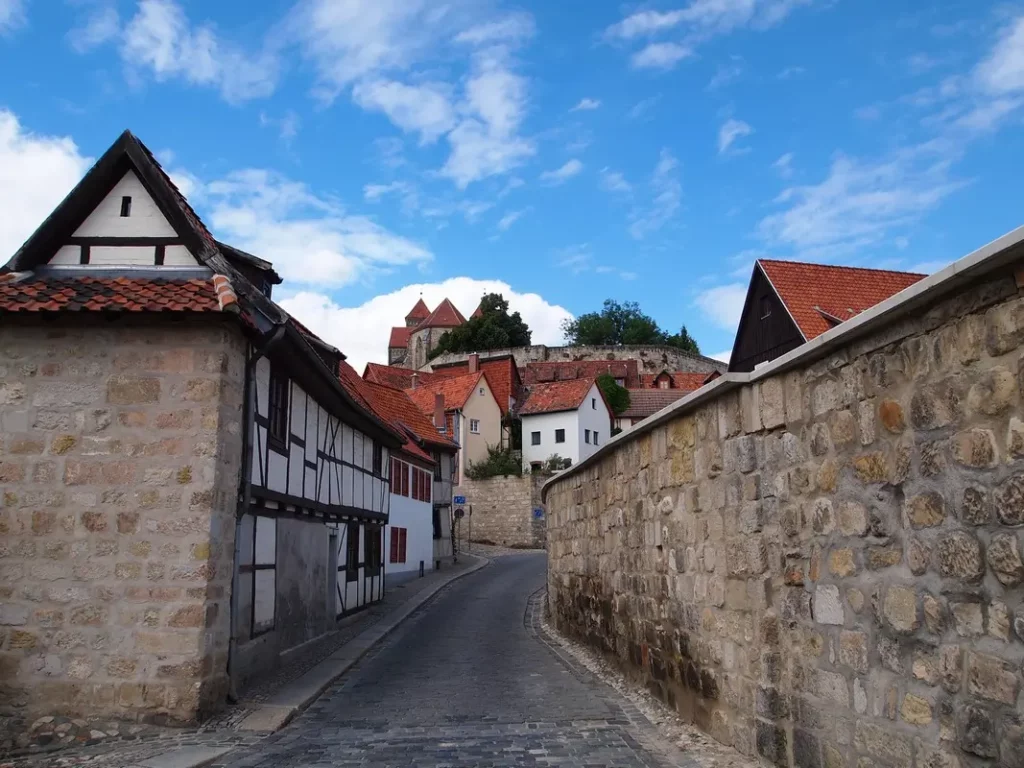

The church was restored by a Lombard master, therefore it is an example of North Italian architecture. Initially, the church had numerous murals, but most of them have not survived, only in the crypt you can see its remains (early 13th century). Henry I and his wife Matilda are buried in the crypt.
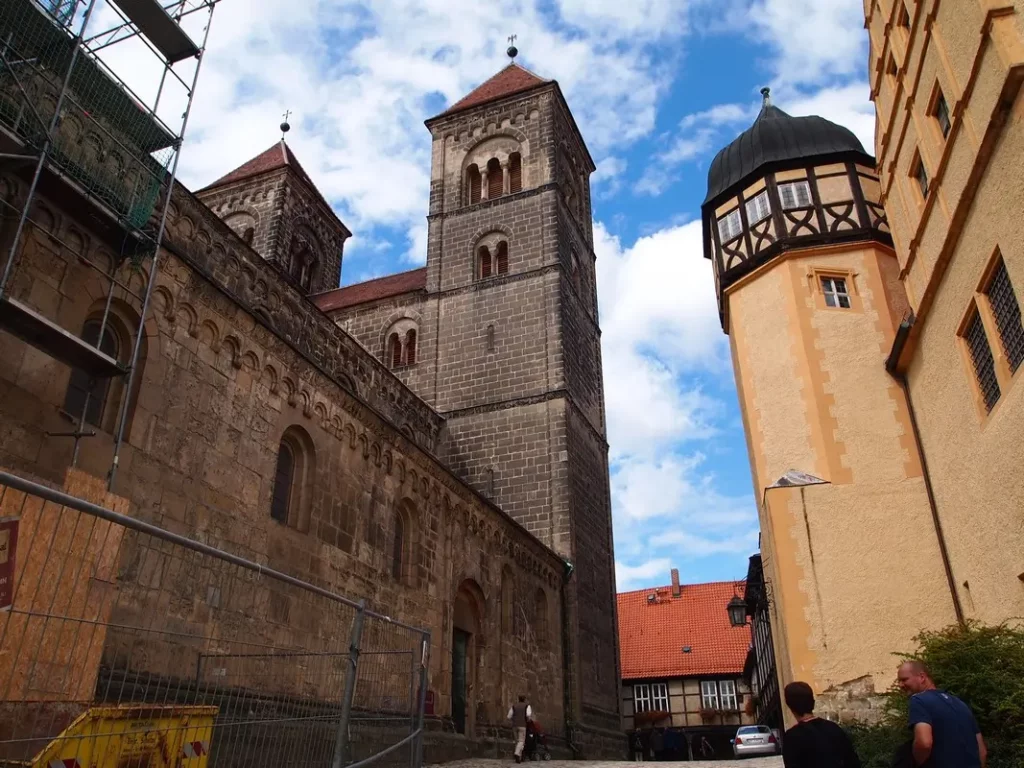
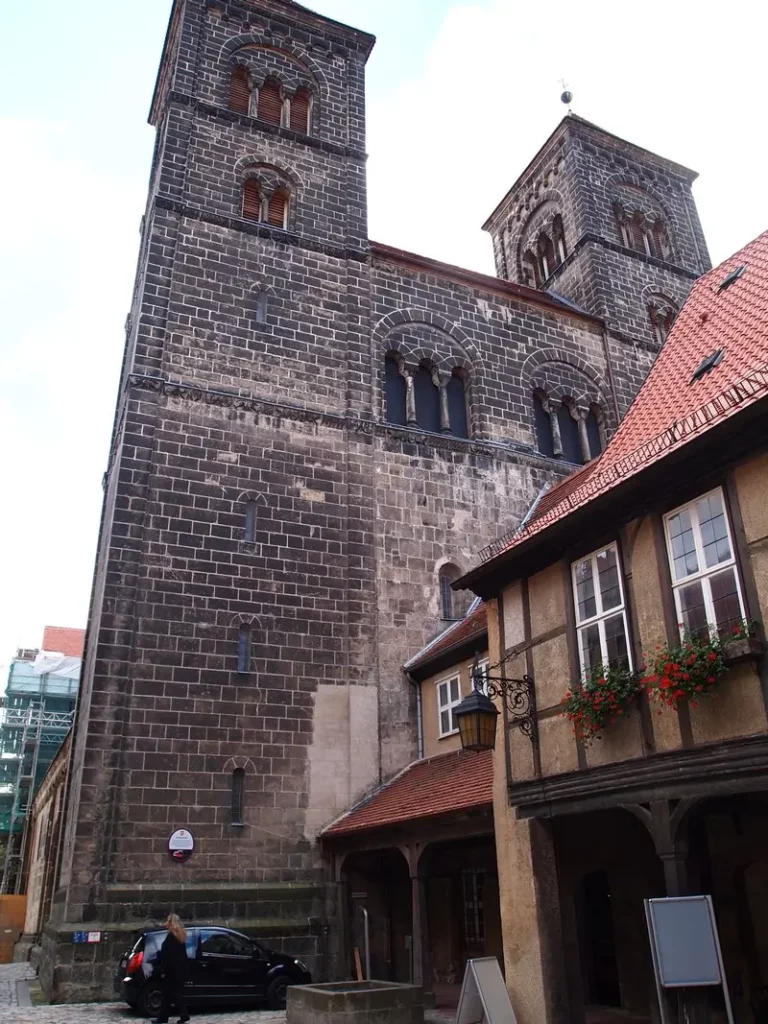
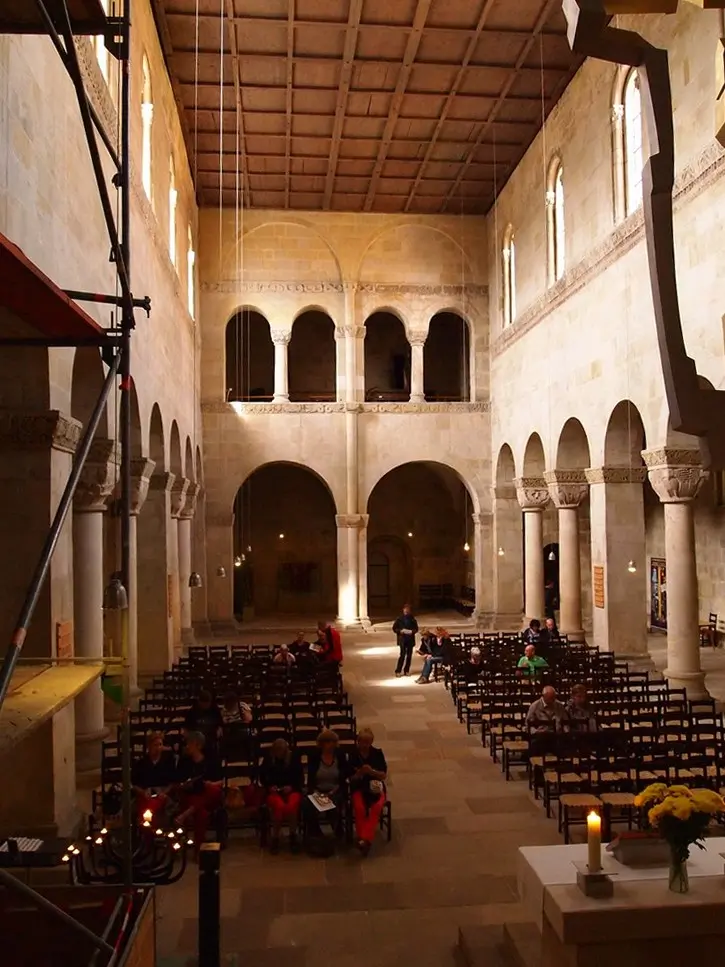

Upstairs there are two rooms where the cathedral’s treasures are kept. They are second only to the treasures of Aachen and Halberstadt. At the end of the WWII, a part of the priceless collection was stolen by an American soldier, and only after his death at the end of the 20th century they were discovered during an attempt to sell them. The treasure was returned for only $ 3 million.
You can see
a 9th century manuscript written in gold on parchment,
a fragment of a 4th century manuscript (one of the first translations of the Bible from Greek into Latin),
ivory beard comb of Henry 1 (7th-8th centuries),
carpet (1200).
Personally, it was the carpet that caused the greatest admiration for me: everything else, of course, is beautiful and shiny, but keeping the carpet in such excellent condition, I think, was very difficult.
Next to the church is the abbess’s palace. There is a museum dedicated to the history of the city and the monastery. The abbess’s rooms are decorated in Baroque and Biedermeier style. There are various archaeological finds.

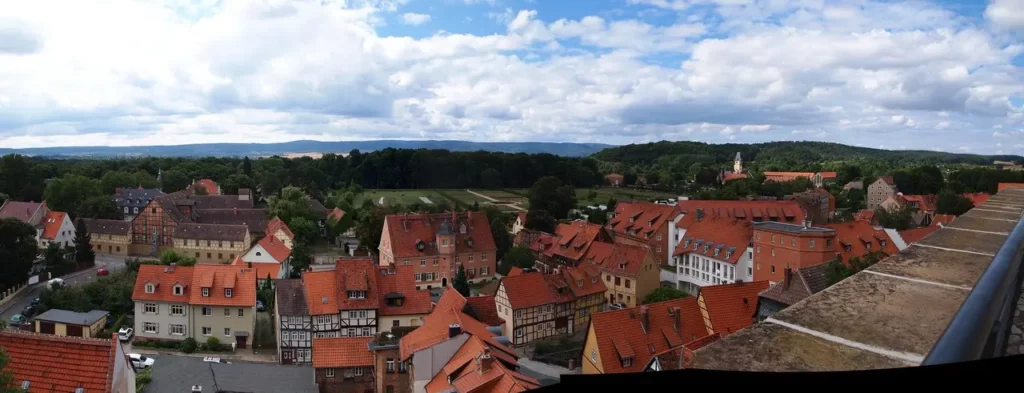
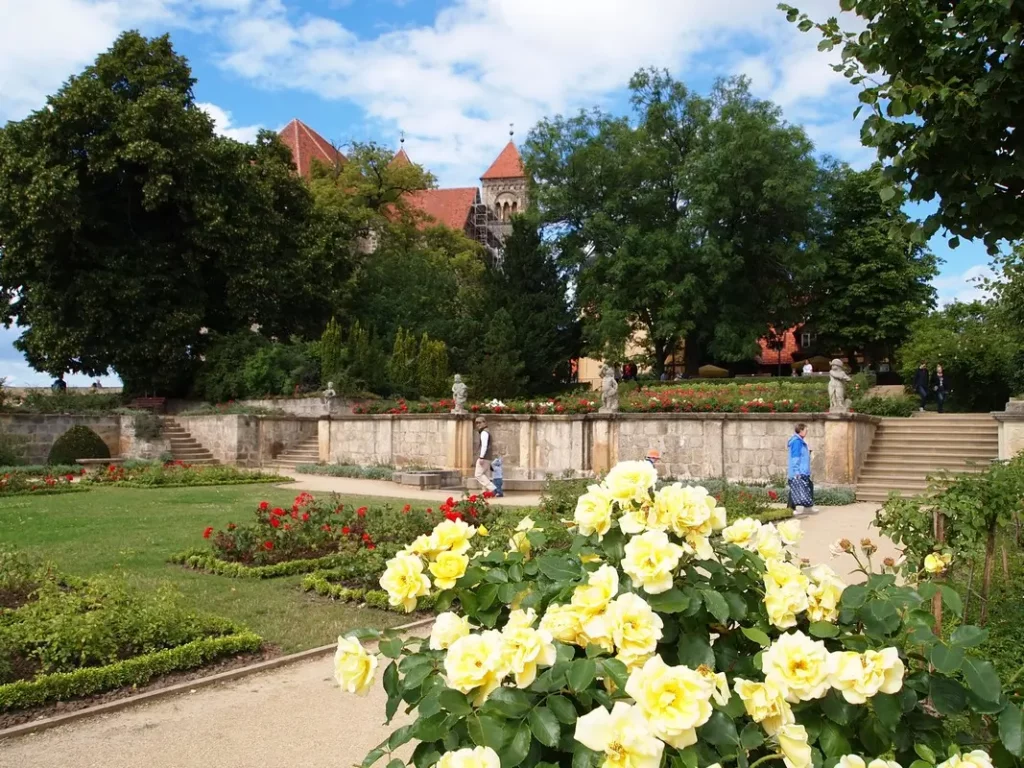
Münzenberg
Münzenberg hill is located across the street from Schlossberg. The name comes from the word “münster”. At the end of the 10th century here was built the Benedictine convent of St. Mary. In the 16th century, during the peasant wars, the monastery was practically destroyed. From the beginning of the 17th century wandering people (musicians, grinders, plumbers) began to build here houses, using the ruins of the monastery for the construction.
Climbing the hill makes sense for the sake of a view of the city. Only without a car – the roads are narrow, driving in many places is only for locals and there is no place for outsiders to park there.
Below, not far from both hills, there is a small church of St. Viperti is all that remains of the monastery, built on the site of the former royal court of Henry I in the 10th century.
Center
We go back to the center. Do not pass by the half-timbered museum. A small museum in the oldest building in the city will help you navigate this type of architecture.
Read more in the topic “Fachwerk history”.
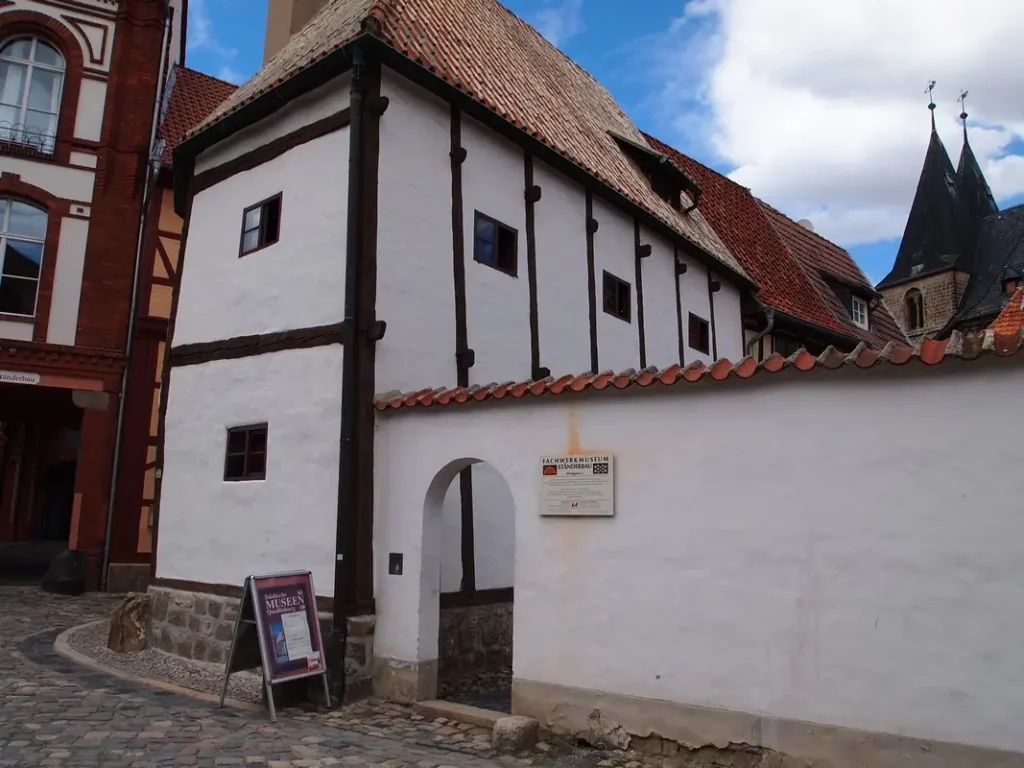

Market Square
The Town Hall on the Market Square is one of the oldest in the region, dating back to the early 14th century. The tower remains from the first Gothic building. It was believed that the city treasures were kept there. The facade acquired its modern look during the reconstruction in 1615.
The walls are traditionally decorated with greenery to make it easier for city dignitaries to breathe.
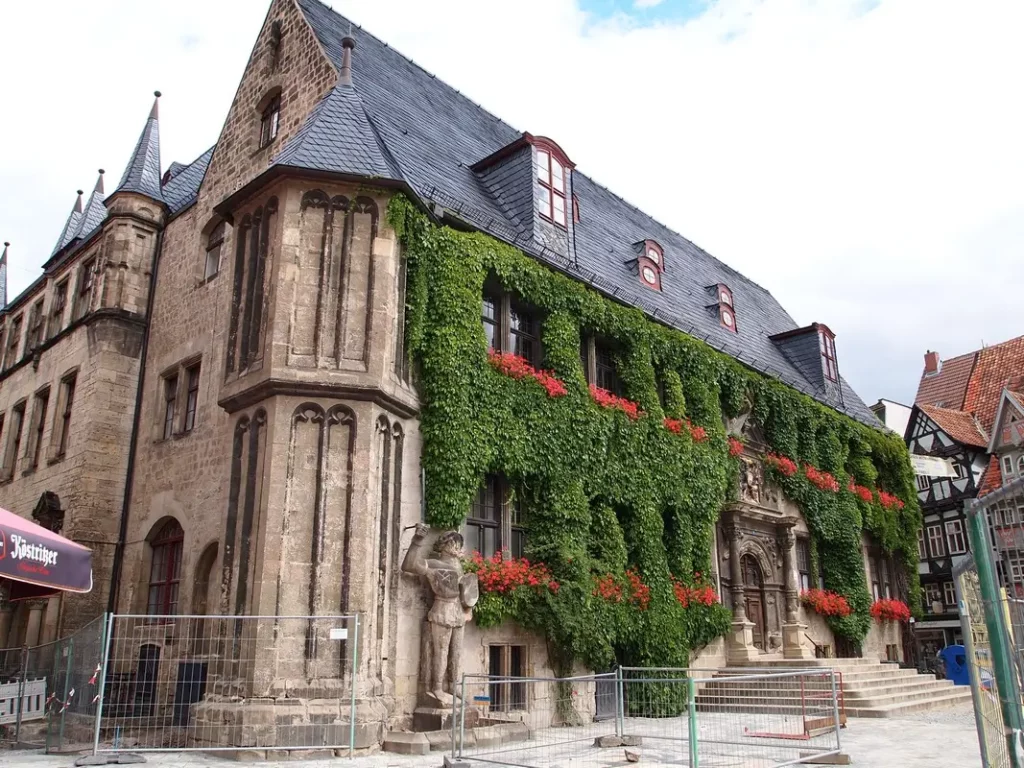
Near the town hall stands the statue of Roland, traditional for northern German cities, symbolizing the freedom of the city, also very old – the beginning of the 15th century. Among such figures, it is the smallest – only 2.75 m.
As a symbol of urban freedom, Roland was thrown and split in 1477, when Abbess Hedwig decided it was time to end the city’s excessive independence and won the war that had begun with the help of powerful brothers. Roland was restored and put up again at the town hall only in 1869.

To the right of the town hall begins Breite Strasse, from which the road to Magdeburg began.
At its beginning there is a small passage in the Schuhhof – a courtyard lane where shoemakers lived and worked, with houses from the 16th-17th centuries. “Shoe yard” and small streets around – the most picturesque part of the city after the Palace Hill.
In medieval Quedlinburg, there were five monasteries at once. And now in the old town there are six churches, the most interesting of them is the Market Church, dedicated to St. Benedict.
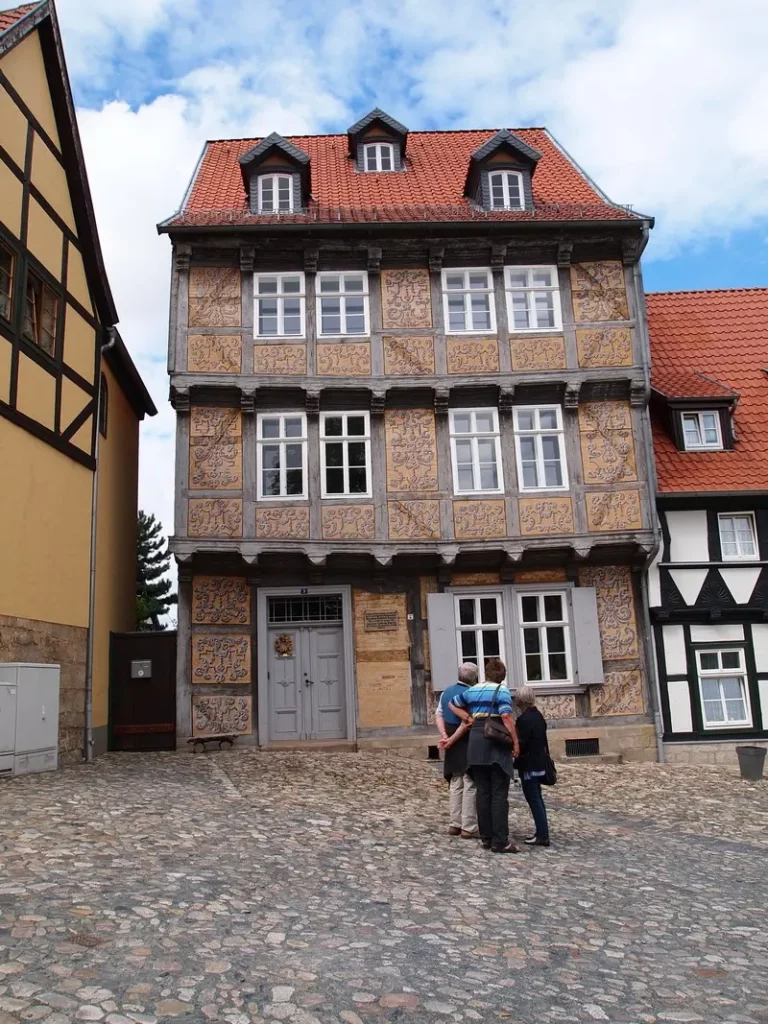
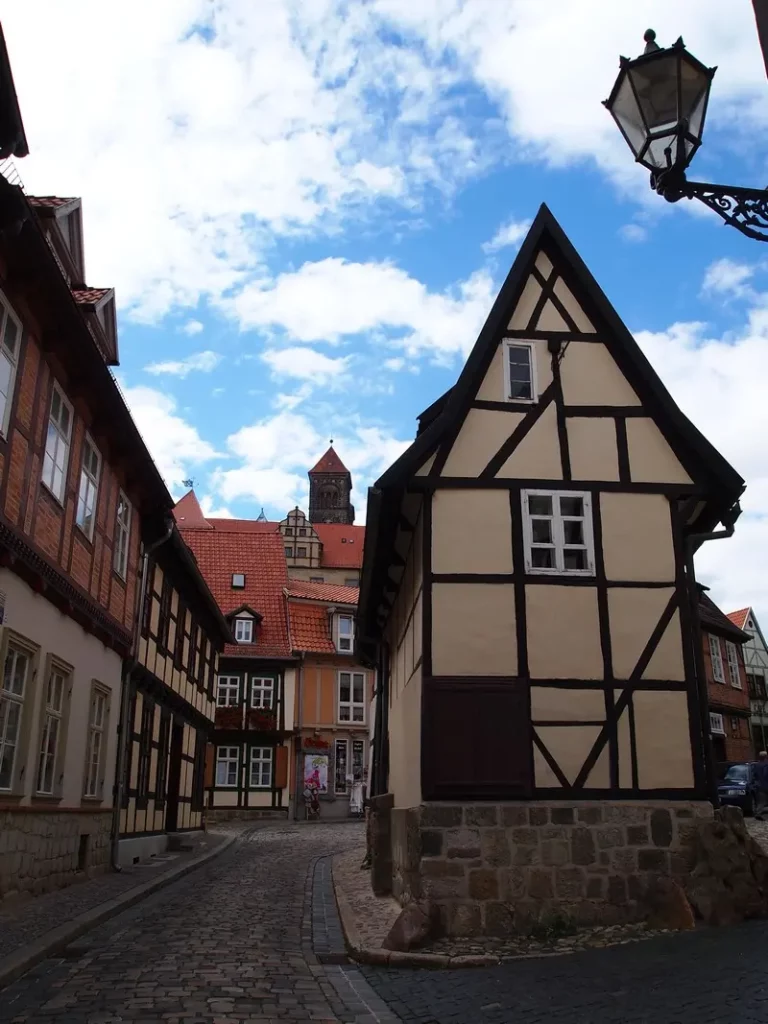
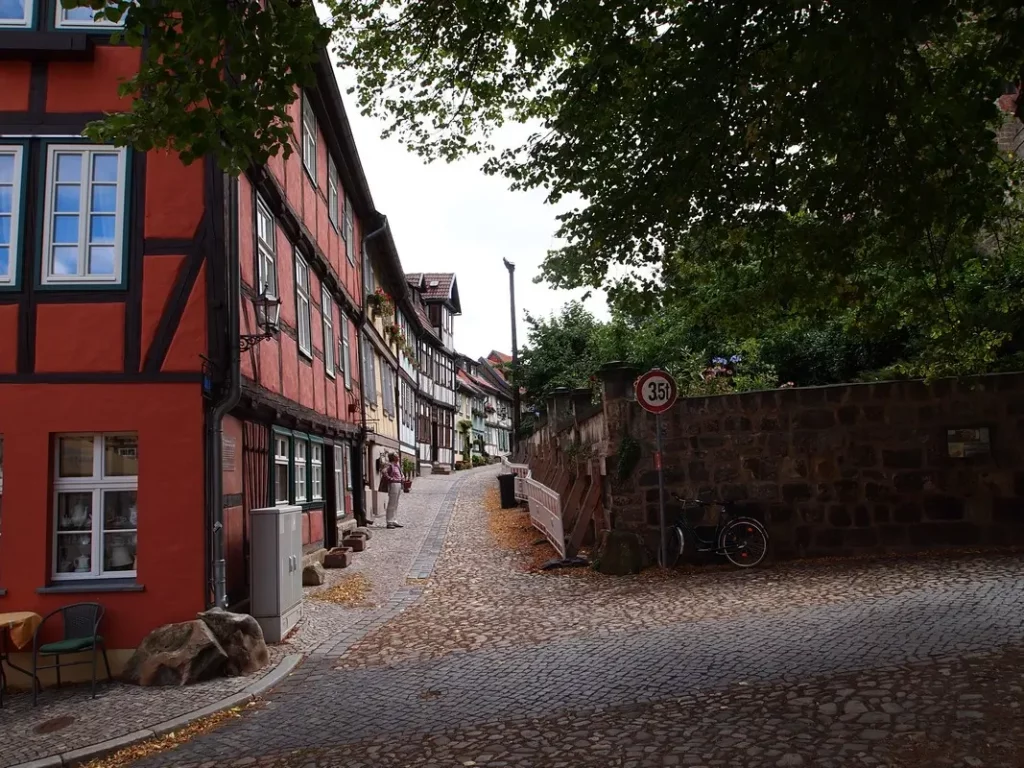
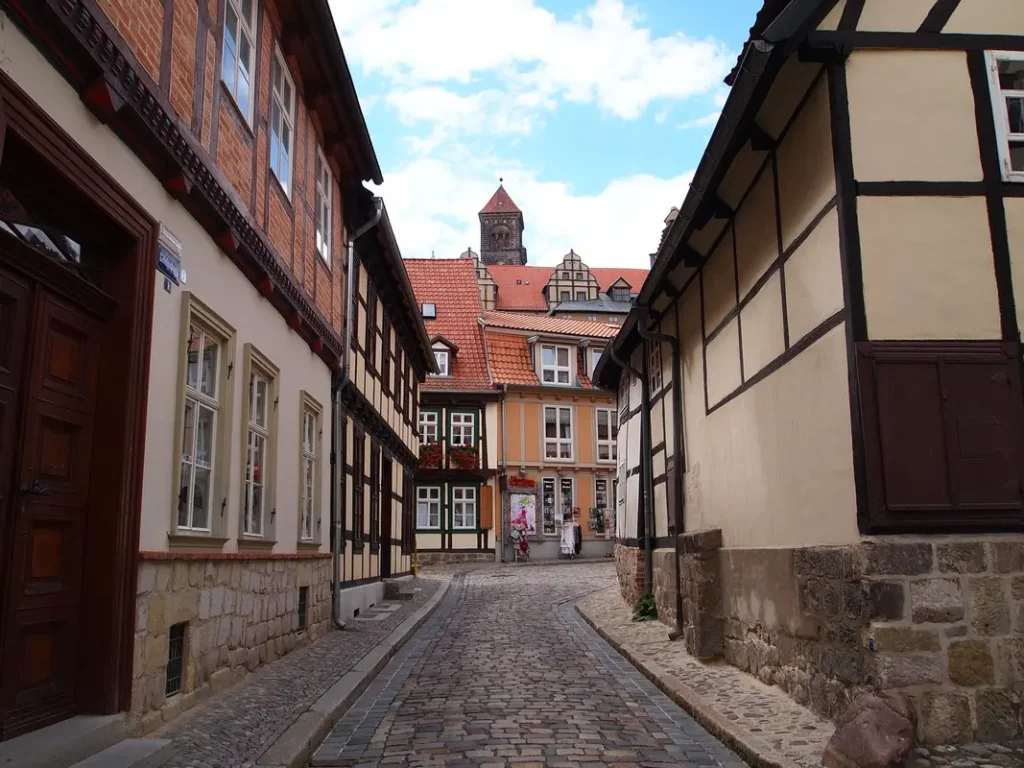


Follow me
Near Quedlinburg is Thale – cable car and chair lift, thermal bath, minigolf, Wildpark, rope parc, playgrounds and Bob Harz. Read more about Thale.
For other posts see #Harz.
Harz attractions on the map: part 1 (west) and part 2 (east).
Do you enjoy the site without cookies? This means that I work for you at my own expense.
Perhaps you would like to support my work here.
Or change your cookie settings here. I don’t use personalized ads


